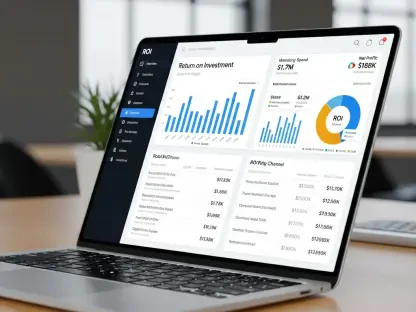The automotive retail industry is experiencing a seismic shift as online marketplaces gain prominence, reshaping how consumers buy and sell vehicles. This transformation, driven by rapidly advancing technologies and evolving consumer preferences, is challenging traditional dealership models and paving the way for a new era in car retailing. The convenience and efficiency offered by digital platforms are creating an environment where traditional dealerships must innovate or risk irrelevance in this fast-evolving marketplace.
The Demise of Traditional Dealerships?
Shifting Consumer Preferences
In recent years, consumer behavior has shifted dramatically, with more people favoring the convenience and efficiency of online shopping. This trend extends to automotive retail, where potential buyers find the idea of browsing extensive inventories from the comfort of their homes increasingly appealing. Traditional dealerships, which rely heavily on physical visits, test drives, and face-to-face negotiations, are finding it difficult to keep up with these changing preferences. The tactile experience of a dealership visit remains valuable to some, yet the limitations of physical inventory and location constraints compel consumers to seek more streamlined options.
The traditional buying process, characterized by time-consuming visits to multiple dealerships in search of the best deal, is quickly becoming obsolete. Consumers now demand an experience that includes remote comparisons, seamless transactions, and the ability to conduct all necessary research online. As a result, dealerships that fail to integrate digital elements into their sales strategies risk losing relevance. The digital age demands a new kind of accessibility and efficiency that physical dealerships, bound by geographic and operational limitations, often struggle to provide.
Trust and Loyalty in the Digital Age
Historically, customer trust and loyalty were built through personal interactions at dealerships. The handshake and face-to-face rapport established during a visit created a foundation of trust that underpinned many sales. However, as online platforms gain traction, they are demonstrating that trust can also be cultivated digitally. Transparent pricing, extensive customer reviews, and detailed product information empower consumers, allowing them to make informed decisions without stepping into a showroom.
To remain relevant, dealerships must focus on translating their traditional strengths into the digital realm. Establishing an effective online presence involves more than just having a website; it encompasses offering live chat support, providing virtual consultations, and ensuring that every digital interaction is seamless and informative. Building and maintaining customer trust in the digital space requires consistent and transparent communication, as well as leveraging technology to offer personalized experiences that build the same level of loyalty once achieved in-person.
Rise of Online Marketplaces
Technological Integration
Online marketplaces have seamlessly integrated cutting-edge technologies to enhance the car-buying experience. Features like virtual showrooms, high-quality images, and 360-degree views allow prospective buyers to inspect vehicles thoroughly without leaving their homes. Additionally, easy access to financing options and digital paperwork accelerates the buying process, reducing the hassle often associated with traditional purchases. These platforms cater to tech-savvy consumers who appreciate the convenience of completing most, if not all, of the purchasing process online.
Moreover, online tools for car comparisons, vehicle history reports, and financing options empower consumers by providing all necessary information in one easily accessible place. These combined features contribute to a more efficient and informed purchase decision. By enabling customers to conduct thorough research and explore different options effortlessly, online marketplaces effectively eliminate the friction points common to traditional car buying. The result is a streamlined process that prioritizes convenience and customer empowerment, addressing nearly every challenge posed by the traditional dealership model.
Price Transparency and Extensive Choices
One of the standout benefits of online marketplaces is their ability to offer a wide range of options and transparent pricing. Consumers no longer have to rely on a single dealership’s inventory; they can easily compare prices across various sellers, ensuring they get the best deal. This transparency fosters a more competitive market, potentially leading to lower prices and better overall value for customers. Additionally, the extensive inventory available on these platforms all but guarantees that consumers will find a vehicle that meets their preferences and budget.
The ability to sort and filter options according to individual needs further personalizes the shopping experience. Online marketplaces often also offer tools for customer reviews and ratings, adding another layer of transparency and trust. Extensive choices mean that consumers no longer have to compromise on features, color, or price; they can find precisely what they’re looking for. In this environment, dealerships must adjust by offering competitive pricing and a diverse inventory to attract and retain customers.
Dealer Adaptation Strategies
Digital Integration and Omnichannel Approach
To remain competitive, traditional dealerships are increasingly incorporating digital tools and platforms into their operations. Virtual showrooms, interactive websites, and online financing options have become essential components of the modern dealership. Implementing an omnichannel approach, where physical and digital experiences are seamlessly blended, ensures that customers enjoy a cohesive journey regardless of how they choose to shop. This digital transformation involves significant investment in technology and training, ensuring that staff are equipped to handle online inquiries and provide excellent customer service across multiple channels.
The goal is to create a seamless and flexible car-buying experience that meets contemporary consumer expectations. For instance, a customer might start their journey online by browsing vehicles and comparing prices but may still wish to visit the showroom for a final inspection and test drive. Ensuring that this transition between digital and physical touchpoints is smooth and consistent is crucial for maintaining customer satisfaction and loyalty. Dealerships that successfully implement such integrated strategies are more likely to thrive in this evolving marketplace.
Enhanced Customer Service
Improving customer service is crucial for dealerships looking to survive and thrive in this new landscape. Personalized online interactions, round-the-clock support, and efficient response times are key elements in meeting customer needs. By leveraging customer data, dealers can offer tailored recommendations and services, enhancing the overall buying experience. Training sales personnel to be proficient in both traditional and digital sales techniques is essential for this transformation.
The ability to switch between face-to-face interactions and virtual consultations allows dealerships to cater to a broader audience. Continuous support, even after the sale, is vital for building long-term relationships and fostering loyalty. Providing ongoing assistance, maintenance tips, and exclusive offers can help keep customers engaged and satisfied. By focusing on enhanced customer service, dealerships can differentiate themselves in a competitive market, ensuring that they remain relevant and respected players in the automotive retail industry.
The Future of Automotive Retail
Augmented and Virtual Reality
As technology continues to evolve, augmented reality (AR) and virtual reality (VR) are set to further revolutionize automotive retail. AR can enable consumers to visualize vehicles in their driveways, while VR can provide immersive test-drive experiences without requiring a physical car. These innovations promise to bring a new level of interactivity and personalization to the car-buying process. Adopting these advanced technologies requires substantial investment but offers significant returns in terms of customer engagement and satisfaction.
By providing a unique, immersive experience, dealerships can differentiate themselves in a crowded market. Consumers may be more inclined to purchase a vehicle from a dealership that offers the cutting-edge convenience of AR and VR, rather than sticking with more traditional options. These technologies not only enhance the buying process but also offer potential for post-purchase engagement through features like virtual owner’s manuals and augmented maintenance guides. The future of automotive retail lies in creating a highly interactive and engaging customer experience that leverages the latest technological advancements.
AI and Personalization
The automotive retail industry is undergoing a dramatic transformation as online marketplaces become more prominent, revolutionizing the way consumers purchase and sell vehicles. This significant shift is primarily driven by rapid technological advancements and changing consumer preferences, which poses a substantial challenge to traditional dealership models. Consumers are increasingly favoring the convenience and efficiency offered by digital platforms for their car buying and selling needs. As a result, traditional dealerships find themselves at a crossroads, where innovation is not just an option but a necessity to stay relevant in this fast-evolving marketplace. Digital platforms provide an all-encompassing experience that makes car shopping more accessible, transparent, and often stress-free. Customers can now browse, compare prices, read reviews, and even complete transactions without ever setting foot in a dealership. This convenience has led to higher expectations for customer service and streamlined processes. Therefore, traditional dealerships must embrace these new technologies and adapt to meet the evolving demands of the modern consumer, or they risk becoming obsolete in this rapidly changing landscape.









